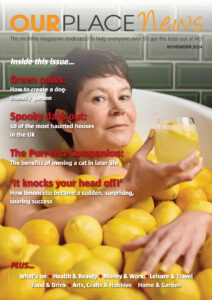Planned Government regulations will soon require face coverings to be worn by all hospital outpatients and visitors as well as anyone travelling on public transport in England.

Before the new rules come into effect on June 15, here is what you need to know about the use of masks and coverings.
What is a face covering?
Face coverings are not the same as face masks. The Government has stated that coverings can be made from scarves, bandanas or other fabric items, so long as they cover the mouth and nose. They should allow the wearer to breathe comfortably and be tied behind the head to provide a “snug fit”. Officials have said people can make their own coverings at home using T-shirts or cotton
fabric and string.
Why are they being recommended?
The Government states that, while wearing a face covering does not protect the wearer, it may protect others if people are infected but have not yet developed symptoms. People wearing a covering should wash their hands before putting it on and after taking it off. It should also be washed regularly in the laundry with detergent, the Government said.
When should I wear a face covering?
According to new World Health Organisation (WHO) advice, face coverings should be worn in public whenever social distancing is not possible, especially if you are over 60-years-old or have an underlying health condition. However this is not yet compulsory.
Are there any specific locations that require me to wear a face covering?
Health Secretary Matt Hancock announced on Friday all hospital visitors and outpatients will be required to wear face coverings and all hospital staff will be required to wear surgical masks in England from June 15.
Face coverings will also be mandatory from the same date for anyone using public transport in England.
Several airlines such as easyJet and Ryanair have also introduced a requirement for passengers to wear face masks.
The advice reads: “The evidence suggests that wearing a face covering does not protect you, but it may protect others if you are infected but have not developed symptoms.
“If you have symptoms of Covid-19 (cough and/or high temperature) you and your household should isolate at home: wearing a face covering does not change this.”
It adds that the recommended face coverings are not the same as the surgical masks used by healthcare staff and other workers. “Face coverings should not be used by children under the age of two or those who may find it difficult to manage them correctly, for example primary school age children unassisted, or those with respiratory conditions,” the guidance continues. “It is important to use face coverings properly and wash your hands before putting them on and taking them off.”
There are differences between the performance and protection of each type of mask and here we look at the difference between a variety of face coverings that are available:
Cloth masks or face coverings
We are now being advised that homemade masks and face coverings could help to limit the transmission of Covid-19 where social distancing is difficult, especially on public transport and in shops. Homemade masks are less effective than medical masks at preventing the wearer from transmitting the virus so it is important to understand their limitations and continue to adhere to the Government’s social distancing rules and advice on hand washing and avoiding touching the mask or face. Cloth masks are very easy to make with even no-sew options available.
Surgical face masks
Surgical medical masks are used in hospital and healthcare settings and are for use in protecting others from the wearer transmitting infection. There are four main types:
• Type I Face Mask
• Type I R Face Mask
• Type II Face Mask
• Type II R Face Mask
They differ in their bacterial filtration efficiency from 95 to 98% and in thickness and comfort. The breathing resistance, and splash resistance for Type I R and Type II R masks, are exactly the same. Surgical masks of this type stop the wearer from infecting the surrounding environment. They are not effective at protecting the wearer from airborne diseases such as coronavirus.
Sustainable & reusable face masks with filters
There are many face mask being sold by a whole host of suppliers. Find out more about sustainable face masks from 100% recyclable plastic here from MAASK here.
These sustainable masks are hand stitched from fabric created out of recycled ocean plastic. They have an internal pocket for a disposable protection filter which is PM 2.5 grade. This is similar to FFP1 (but is not to be confused with N95/KN95 or FFP2/FFP3 which are used in medical/surgical settings).
These masks provide a high level of protection from the transmission of water droplets and other airborne irritants. They are suitable for the general public using them for added protection in public settings such as crowded city centres, public transport, airports, shops and parks/beaches/beauty spots etc.
Respirator masks
These respirators meet the guidelines from the World Health Organisation for protection against Covid-19 and are worn in ICU hospital units.
• FFP2 Face Mask (equivalent of N95)
• FFP3 Face Mask
FFP2 & FFP3 Face Masks are European classes of respirators, tested on the direction of inspiration (outside to inside) and take into account leakage to the face and filtration efficiency. These and other respirator masks, including N95 are effective at protecting the wearer from viral transmission. N95 masks cannot be officially legally recommended for use in healthcare settings in Europe although in the current situation with PPE shortages in practice a more flexible approach seems to be being taken.
(Article source: Silver Surfers)

